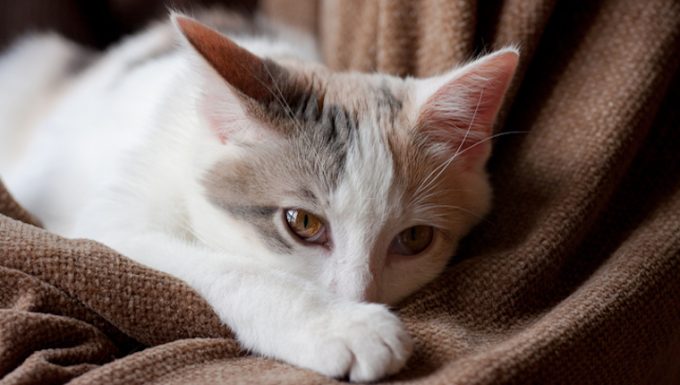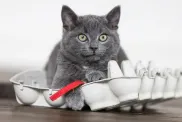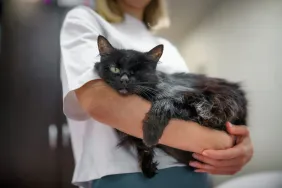Cirrhosis and fibrosis of the liver in cats are two of the most common liver conditions for felines. They both involve the formation of scar tissue.
The conditions affects a cat’s immune system and energy levels. Additionally, in some cases the conditions are inherited.
If you see the signs of cirrhosis and fibrosis of the liver in your cat, then get to a veterinarian for a proper diagnosis and treatment.
Here’s what you should know about the symptoms, causes, and treatments for the conditions.
Symptoms of Cirrhosis and Fibrosis of the Liver in Cats
The conditions produce a very wide range of symptoms. For example, some of the most common symptoms include:
- Seizure
- Energy loss
- Diarrhea
- Vomiting
- Appetite loss
- Going blind
- Constipation
- Peeing a lot
- Drinking a lot of water
- Pee turning orange
Causes of Cirrhosis and Fibrosis of the Liver in Cats

The cause of the conditions can be a number of things. For instance, some of the common causes include:
- Inflammatory bowel disease (IBD)
- Certain medications
- Infectious diseases
- Inflamed bile ducts
- Liver injuries
- Bile duct blockages
Treatments for Cirrhosis and Fibrosis of the Liver in Cats
Firstly, your vet will ask about your cat’s symptoms. Secondly, your vet will carry out a full physical examination. This will include blood and urine tests.
Usually, a process called fine needle aspirate is also used. This is to examine the liver.
Treatment usually depends on the severity of the conditions. Hospitalization and fluid therapy can be needed for extreme cases. But less severe cases can be treated at home.
Sometimes, surgery will be required to treat the conditions. This can involve removing part of the liver.
In many cases, medication will be prescribed. It is vital to follow your vet’s precise dose and frequency instructions. Also, always complete the full course of medicine.
While recovering at home it is important to provide your kitty with a quiet and calm environment. Also, keep up regular visits with your vet to monitor their recovery.
Have you ever cared for a cat who suffered from these conditions? How did your vet help your kitty recover? Let us know in the comments section below.









